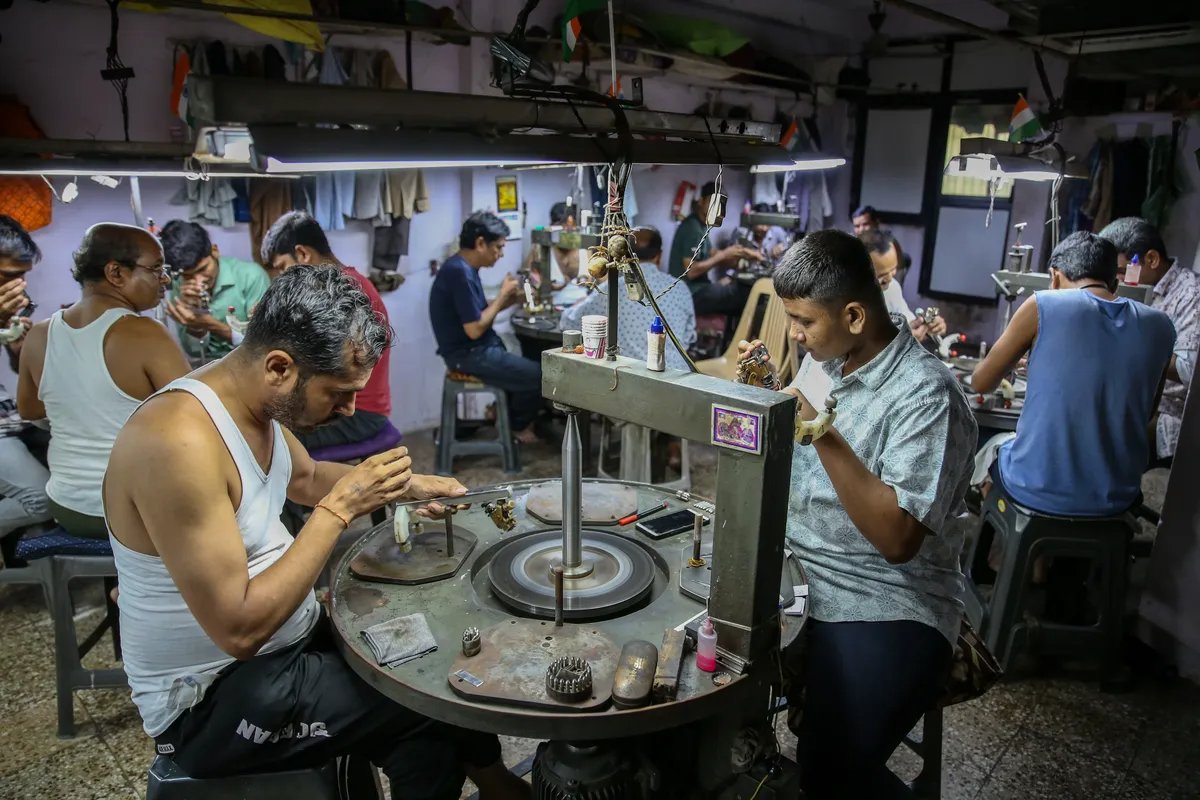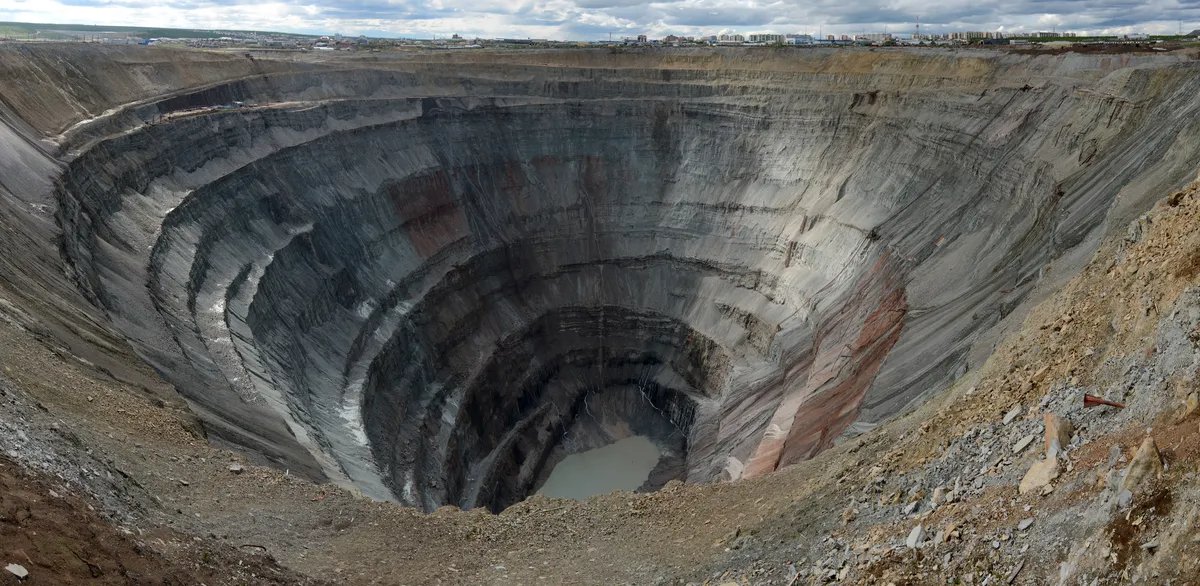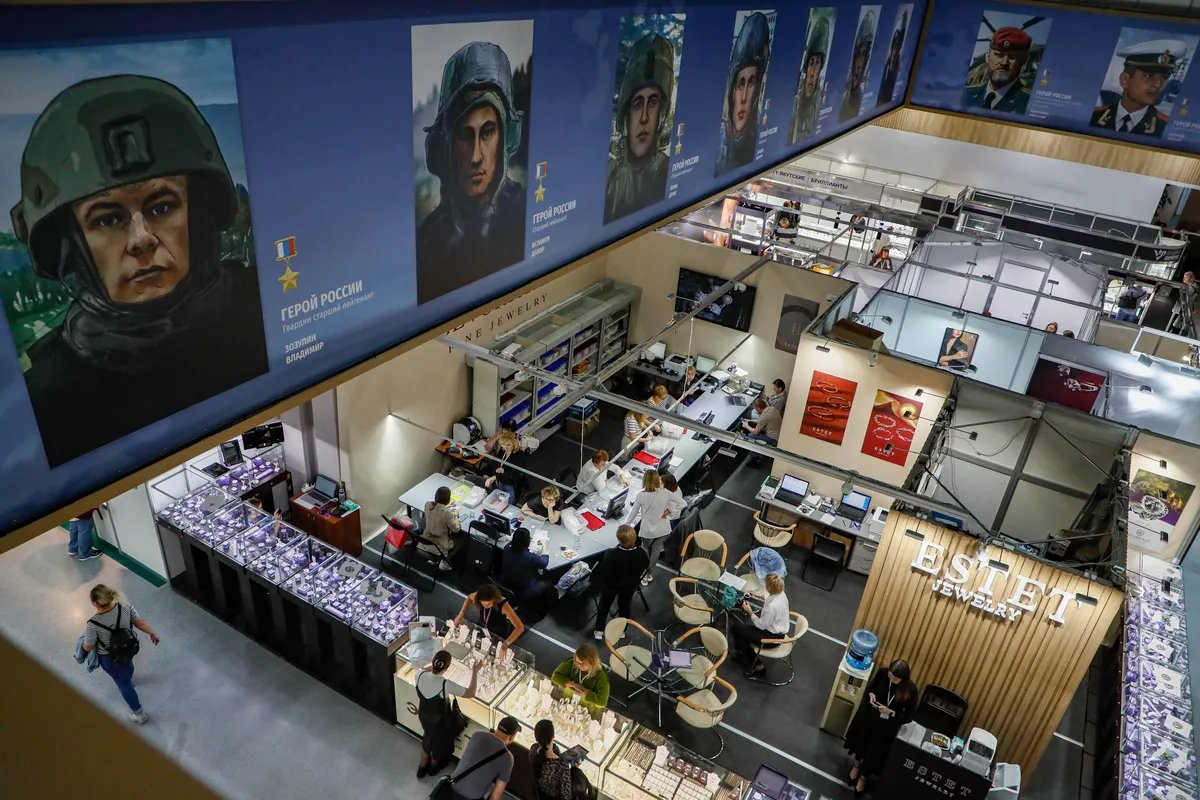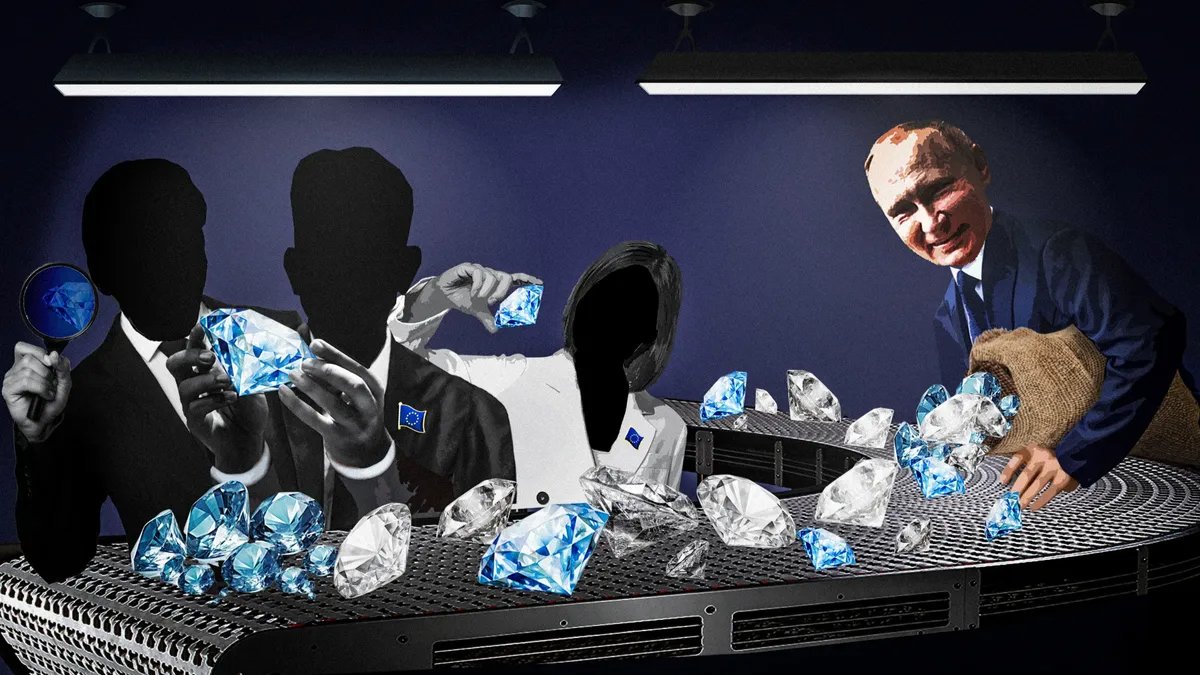The European Union has had its sights on Russia’s lucrative diamond industry for the past year and a half in its multi pronged effort to reduce the Kremlin’s revenue streams. But will sanctions really be able to stem the flow of Russia’s most dazzling export?
The US, Canada and the UK all imposed their own sanctions on Russian diamonds earlier this year. Both the EU and the G7 are soon expected to follow suit, with a ban coming into force “any day now” according to a source cited by the EUobserver, a Brussels-based newspaper that covers EU institutions.
While Russia is the world’s largest producer of uncut diamonds, and despite much talk of a potential ban in Europe going on since the start of the war in Ukraine, no measures curbing the sale of precious gems have featured in any of the 11 sanctions packages announced by the EU since last February.
Imposing sanctions on a non-essential commodity wouldn’t normally pose a challenge, but Belgium, which is home to the world’s largest international diamond trading hub, has long blocked the EU’s attempts to implement a ban on Russian diamonds citing its own commercial interests.
However, following Belgium’s decision to reconsider its previous opposition to the ban, the EU is now close to an agreement that would end the import of Russian diamonds, altogether.
A draft of the ban is currently being prepared by members of the G7 on the basis of several proposals submitted by Belgium, France, India and the Global Council for Diamonds. All being well, it should be included in the EU’s 12th sanctions package and could even be adopted before the end of the year.
The main challenge the bloc faces is how to make the ban effective. Since Russia’s invasion of Ukraine, the EU and US have repeatedly come up against Kremlin sanction busting schemes, and that’s also been true of the diamond sanctions already adopted by Washington, London and Ottawa.
While the ban won’t sufficiently impact Russia’s revenues to do real harm to the Russian economy, it will deliver a symbolic blow by demonstrating that the West can establish mechanisms to make sanctions work even in markets with complex supply chains.

Employees inspect diamonds at a diamond workshop in India, where 80% of the world's diamonds are cut and polished. Photo: Divyankani Solanki / EPA-EFE
The core of the diamond business
Russia is by far the world’s largest producer of diamonds, and was the origin of more than a third (34.95%) of all gems mined globally last year.
Most Russian diamonds pass through India where 90% of all precious stones are cut and refined. This includes those arriving from major trading hubs such as Antwerp, Dubai, and Tel Aviv, diamond traders that spent $1.9 billion, $1.2 billion and $387 million respectively on Russian diamonds in 2021.
Despite the invasion of Ukraine, the global appetite for Russian diamonds is as big as ever. Russia’s principal diamond mining company, Alrosa, has actually managed to grow its revenue so far this year, which directly benefits the Russian government as the owner of a third of the company. Last year, the amount of diamonds mined in Russia grew by 3 million carats from the year before, with targets for the coming year just as high.
Since the war, the main global trading hub for Russian diamonds has, since announcements by Cartier and Tiffany & Co. that they would no longer buy Russian gems, moved from Antwerp to Dubai according to The Kyiv Independent.

Diamond cutting in Surat, India. Photo: Divyankani Solanki / EPA-EFE
Yet both companies, along with many other major jewellery manufacturers, continue to make their products using smaller Russian diamonds which are sold to them with other gems in “mixed” parcels.
Unlike in Antwerp, where diamonds undergo stricter certification procedures, it’s relatively easy to launder Russian diamonds in Dubai by using the same “mixed” bag work around. This ruse is similar to that used to circumvent oil sanctions, where Russian oil or oil products are mixed in with those produced by various other countries, allowing them to be classified as non-Russian.
This market shift has prompted a reversal in the EU’s position. According to Reuters’ sources, Belgium, France, India and the World Diamond Council, are all suggesting their own proposals to keep Russian diamonds off the global market.
The final cut
Both the G7 and the EU recognise that the ban needs to address the interests of stakeholders whilst also tackling several key problems.
It is critical the ban provides a mechanism to track the origin of diamonds while also policing illicit exports. Alrosa’s growth demonstrates that the sanctions already imposed by the US, the UK and Canada are ineffective. Russian diamonds continue to find their way to the United States — responsible for over half of the world’s demand for diamonds — through an even greater number of intermediaries than before.
Clarity on how sanctions will be enforced and who will be responsible for prosecuting violations are also needed. A Novaya Gazeta Europe investigation in April has shown how the lack of enforcement has hindered the application of previous EU sanctions. When adopted on an international level, their application is the responsibility of national law enforcement agencies who act according to national legislation. While there is some legislative coordination among European agencies, this is not the case within the G7, prompting questions about the practical viability of any sanctions package.
Diplomatic efforts will also be crucial. Over the past year and a half of war, Russia has consistently used underhand methods to import goods via non-EU countries. Negotiations will be necessary to make sure that all sides comply with the new sanctions. The task of onboarding other key states involved in the diamond trade — India, the UAE, Botswana and the Democratic Republic of Congo — is complicated by their already close relationships with Russia.
Rock solid
While diamonds are far from the most important Russian export, accounting for less than 1% of Russia’s total export revenues, the industry is highly monopolised with 90% of all deposits belonging to the partially state-owned Alrosa group. Of these, some 77% are located in Yakutia, a giant region in the Russian Far East, and the remaining 23% are in the Arkhangelsk region in the Russian Arctic.

The Mir quarry in Mirny, Yakutia. Photo: Wikimedia Commons, CC BY-SA 3.0
For Yakutia, diamond mining is an essential source of income. Between Alrosa’s dividends and the taxes it pays to the region, the company is responsible for providing a third of the region’s annual budget.
The industry remains robust and is likely to remain so once the war in Ukraine is over. That said, Alrosa is experiencing some problems due to sanctions. This year’s profits are expected to halve compared to results in 2022, and may well be even lower in 2024. The company did not pay dividends in the second half of 2021 and in 2022.

This year’s Russian jewellery industry exhibition JUNWEX in Moscow. Photo: Ipksim Shipeknov / EPA-EFE
Stemming the tide
Hans Merket, a researcher at the International Peace Information Service, which works for peace, sustainable development and human rights, explained the thinking behind the sanctions. By forcing Alrosa to trade on less lucrative markets, the group’s overall revenue will shrink, consequently decreasing the amount of tax it pays to the Russian government and thus ultimately reducing its financing of the Russian military machine.
No matter how the G7 and EU choose to implement the ban, it will not be possible to exclude Russian diamonds from Western markets completely. This is down to the global diamond market’s dependence on Russia as a supplier, and has led both exporters and importers to seek ways to circumvent the sanctions.
However, there are crucial differences between previous oil and gas sanctions implemented by the West and the latest restrictions on importing diamonds, Stakeholders stand to gain from effective implementation of the restrictions: For example, Belgium stands to benefit by becoming the sole entry point for diamonds entering Europe, and India will likely benefit by becoming the world’s undisputed diamond-refining centre. This additional, albeit mercantile, motivation to “punish Russia” may significantly increase the chance that this next sanctions package turns out to be effective.
Join us in rebuilding Novaya Gazeta Europe
The Russian government has banned independent media. We were forced to leave our country in order to keep doing our job, telling our readers about what is going on Russia, Ukraine and Europe.
We will continue fighting against warfare and dictatorship. We believe that freedom of speech is the most efficient antidote against tyranny. Support us financially to help us fight for peace and freedom.
By clicking the Support button, you agree to the processing of your personal data.
To cancel a regular donation, please write to [email protected]

